Get full access with a free account
Benefits of the Coloplast® Professional Educational platform
![]() Full access to educational content, events and resources
Full access to educational content, events and resources
![]() Track your progress
Track your progress
![]() Share content with your colleagues
Share content with your colleagues
![]() Share supporting material with your patient
Share supporting material with your patient
Diabetic foot ulcers - what are they and how do you manage them
The burden of diabetic foot disease
Living with diabetic foot disease has a significant impact on a person’s quality of life.1,2 People with diabetes are almost twice as likely to suffer from anxiety and depression as the general population.3 If you add diabetic foot disease to the equation, the burden on the patient, their families, the healthcare system and society at large only increases.4 In fact, research shows that the five-year relative mortality rate of those with diabetic foot disease is 48%.5
As a healthcare professional, you play an important role in reducing this burden. This section gives you a basic understanding of what causes diabetic foot ulcers and specific guidance on how to manage them.
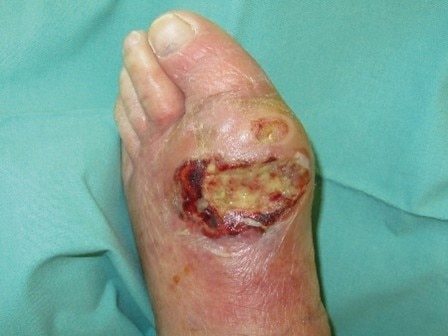
How to manage diabetic foot ulcers
In this section, you’ll learn about:
- how to assess a diabetic foot ulcer
- how to manage diabetic foot ulcers
- how to select the right wound dressing
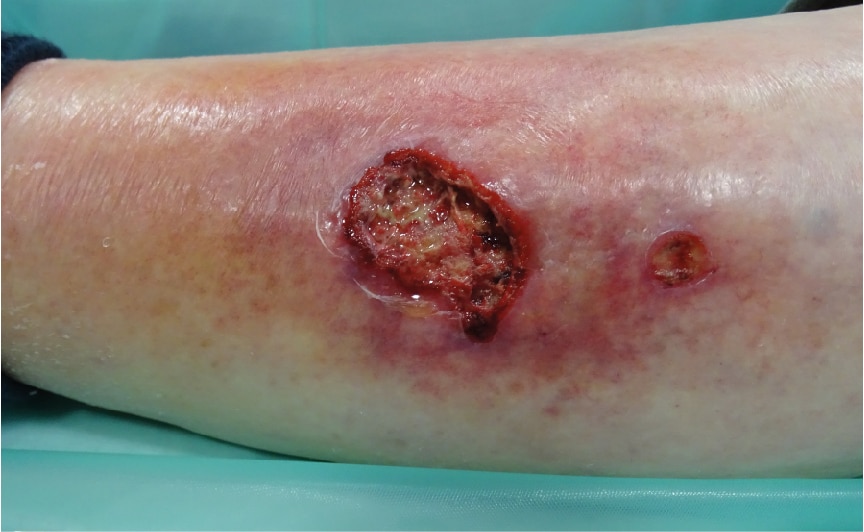
How to treat an infected diabetic foot ulcer
In this section, you’ll learn about:
- how to identify an infected diabetic foot ulcer
- how to grade the infection
- how to treat the infection
Understanding diabetes
What is diabetes?
The pancreas produces a hormone known as insulin. Insulin helps glucose get into our cells, so it can be used for energy.1, 2 Diabetes occurs when the pancreas can no longer make insulin or cannot use the insulin it produces. As a result, the level of glucose in the blood gets too high.
There are two types of diabetes:
- Type 1 diabetes: When the pancreas doesn’t produce insulin. Type 1 is usually diagnosed in children and young adults.2
- Type 2 diabetes: When the pancreas doesn’t produce enough insulin or doesn’t use it well. This type of diabetes occurs most often in middle-aged and older people, and is increasing in most countries.2, 3 Diabetic foot disease is men with type 2 diabetes.3
What are the effects of diabetes?
Diabetes can lead to complications in various organs and tissues. These include:1,3
- retinopathy (i.e. damage to eyes)
- cardiovascular disease (e.g. stroke, peripheral artery damage, heart attack)
- nephropathy (i.e. kidney damage)
- neuropathy (i.e. nerve damage and, as a result, amputation of lower limbs or parts of lower limbs)
Diabetes and its complications are rapidly becoming the world’s most significant cause of morbidity and mortality.1
To find out more about how neuropathy can lead to amputation, read about Diabetic foot ulcers here.
References
- International Diabetes Federation (2017). Clinical Practice Recommendation on the Diabetic Foot: A guide for health care professionals: International Diabetes Federation: Brussels
- Cho, N. H., Kirigia, J., Mbanya J. C., Ogurstova, K., Guariguata, L., Rathmann, W., Roglic, G., Forouhi, N., Dajani, R.,Esteghamati, A., Boyko, E., Hambleton, I., Libânio de Morais Neto, O., Aschner Montoya, P., Joshi, S., Chan, J., Shaw, J., Alafia Samuels, T., Pavkov, M., Reja, A. (2017). IDF Diabetes atlas, Eighth edition. International Diabetes Federation
Understanding diabetic foot ulcers
What is a diabetic foot ulcer?
A diabetic foot ulcer, also known as diabetic foot disease, is a localised injury to the skin and/or underlying tissue, typically found below the ankle, in a person with diabetes.6
What causes a diabetic foot ulcer?
There are two conditions that lead to diabetic foot disease:7, 4
- Peripheral diabetic neuropathy (PDN); and
- Peripheral arterial disease (PAD).
Learn more about Peripheral diabetic neuropathy and Peripheral arterial disease here.
Did you know?
It’s predicted that by 2045, there will be over 629 million people with diabetes in the world. Almost half of this number will be undiagnosed.1, 2.
How do I manage a diabetic foot ulcer?
Step 1: Conducting a holistic wound assessment
Following a standardised and consistent strategy when you evaluate the wound is the best way to make sure you cover all the important aspects. We call this the holistic approach.4, 9 It involves considering internal as well as external factors, such as:10
- the patient’s full history;
- the patient’s medication profile and comorbidities;
- the status of the patient’s diabetes; and
- the wound’s history (for example, type, previous diabetic foot ulcers or amputations, cause, size and depth and signs of infection)4
To help you conduct a holistic wound assessment, try using The Triangle of Wound Assessment. This tool will ensure that you are consistent when evaluating the wound, and help you to choose the optimal treatment for your patient.11
You can read more about the Triangle of Wound Assessment tool here.
Step 2: Finding out if the ulcer is infected
Since infected diabetic foot ulcers have a greater risk of amputation, it’s important that you look for signs of infection when you assess the wound.
If your patient has a wound that is not healing, you should:5
- take the patient’s vital signs and appropriate blood tests;
- assess arterial perfusion, i.e. how well the blood flows through the arteries;
- after debriding the wound, probe and assess the size of the wound; and
- check for local or systemic signs or symptoms of infection.
If you see any or all of the following, it might be a sign of a deep infection:
- evidence of systemic toxicity,
- inflammation distant from the skin wound,
- persistent infection,
- deterioration of previously controlled glycaemia, or
- pain in a foot that had previously lost sensation (insensate).
Keep in mind that Peripheral diabetic neuropathy and Peripheral arterial disease can mask signs and symptoms of infection in diabetic foot ulcers.
To find out more about how to treat infection in diabetic foot ulcers, read more here.
References
View references
- Price, P. (2004). The Diabetic Foot: Quality of Life. Clinical Infectious Diseases. 39, 129–31.
- Raghav, A., Ahmad Khan, Z., Kumar Labala, R., Ahmad, J., Noor, S., Kumar Mishra, B. (2019). Financial burden of diabetic foot ulcers to world: a progressive topic to discuss always. Ther Adv Endocrinol Metab. 9(1) 29–31.
- Ahmad, A., Abujbaraa, M., Jaddouc, H., Younesd, N. A. (2018). Anxiety and Depression Among Adult Patients With Diabetic Foot: Prevalence and Associated Factors. J Clin Med Res. 10(5):411-418.
- Schaper, N. C., van Netten, J. J., Apelqvist, J., Bus, S. A., Hinchliffe, R. J., Lipsky, B. A. on behalf of the International Working Group on the Diabetic Foot (IWGDF) (2019). IWGDF Practical guidelines on the prevention and management of diabetic foot disease.
- International Diabetes Federation (2017). Clinical Practice Recommendation on the Diabetic Foot: A guide for health care professionals: International Diabetes Federation: Brussels
- National Institute for Health and Care Excellence (NICE) (2015). Diabetic foot problems: Prevention and management.
- Pendsey, S. P. (2010). Understanding diabetic foot. Int J Diabetes Dev Ctries. Apr-Jun; 30(2): 75–79.
- Tawfik, M. (2017). Peripheral arterial disease and the diabetic foot. Diabetic Foot Canada 5: 10–13.
- World Union of Wound Healing Societies (WUWHS) (2016). Florence Congress, Position Document. Local management of diabetic foot ulcers. Wounds International.
- Wounds International (2013). International Best Practice Guidelines: Wound Management in Diabetic Foot Ulcers.
- Dowsett, C., Protz, K., Drouard, M. and Harding, K. G. (2015). Triangle of Wound Assessment made easy. Wounds International, May.
Diabetic Foot Patient cases
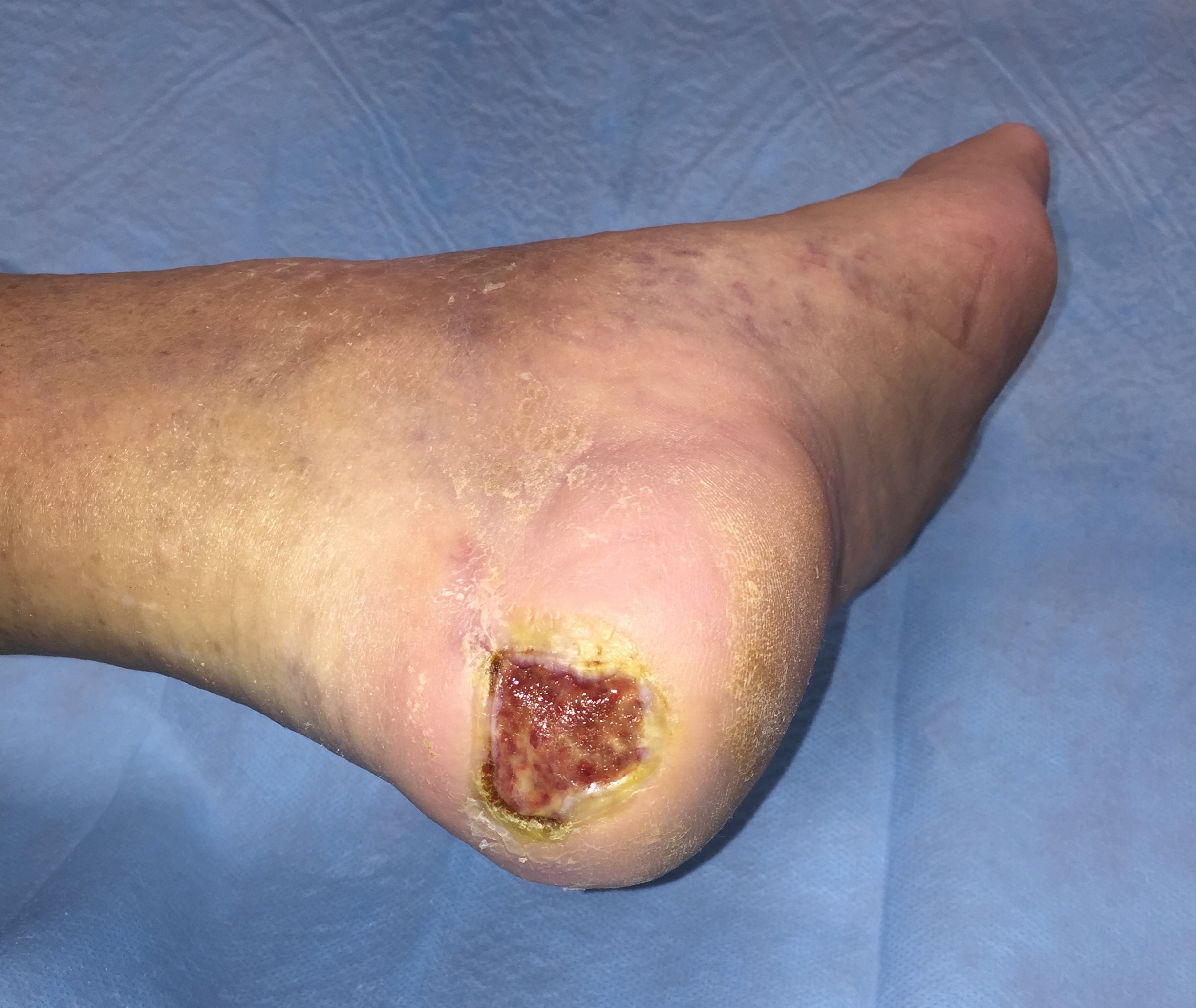
Treatment of a mildly infected diabetic foot ulcer on the heel
Read how the diabetic foot ulcer was treated, leading to 80% granulation tissue in 6 weeks.
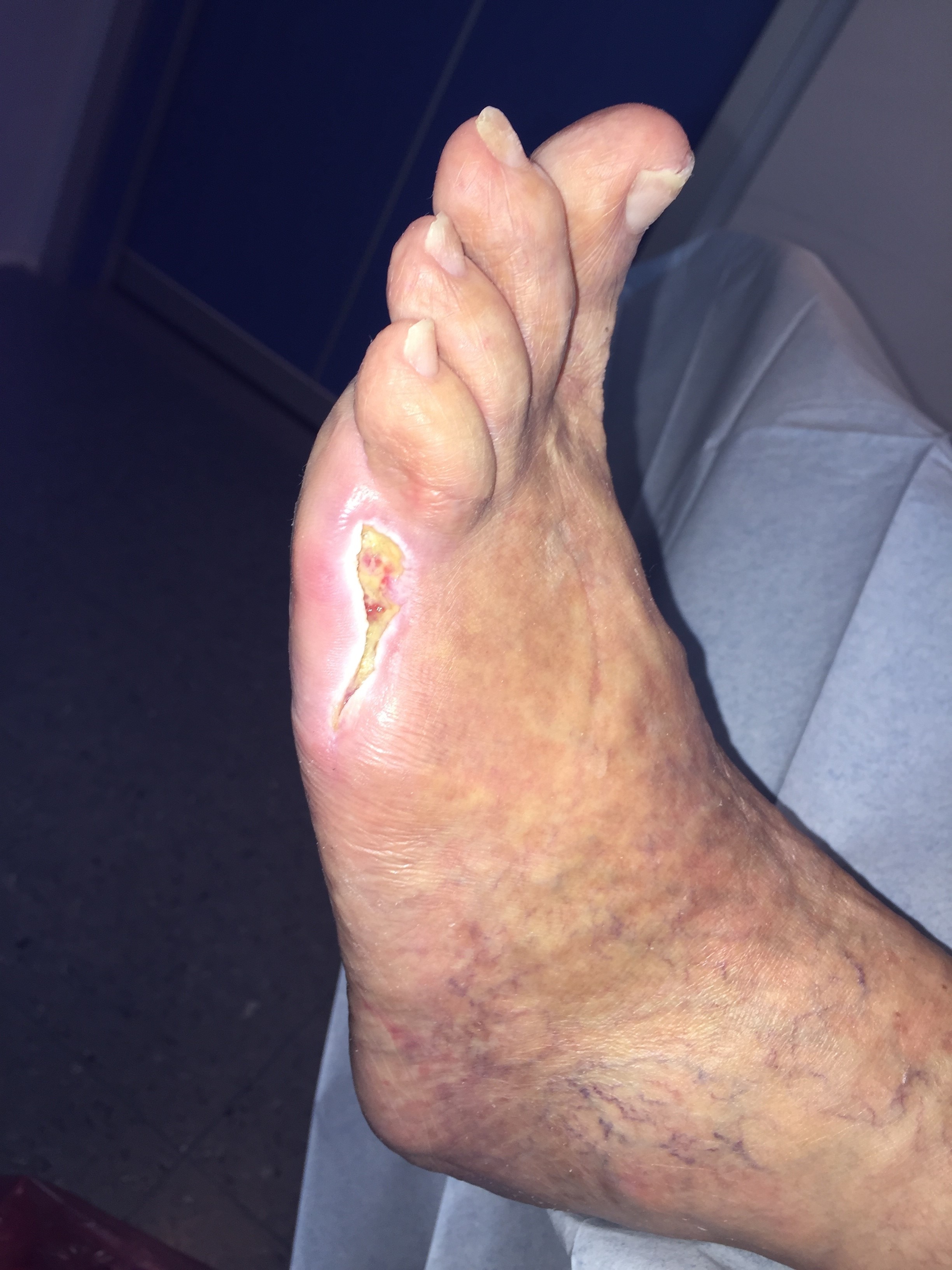
Treatment of a mildly infected diabetic foot ulcer on the toe
Read how a diabetic foot ulcer caused by amputation was treated.
Browse our educational E-learning courses

Diabetic Foot Ulcer
In this course you will learn how to identify, assess, and manage diabetic foot ulcers.
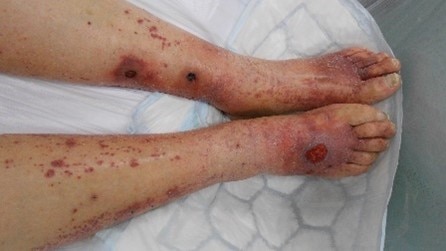
Leg Ulcers
In this E-learning course you will learn how to identify, assess, and manage leg ulcers.
